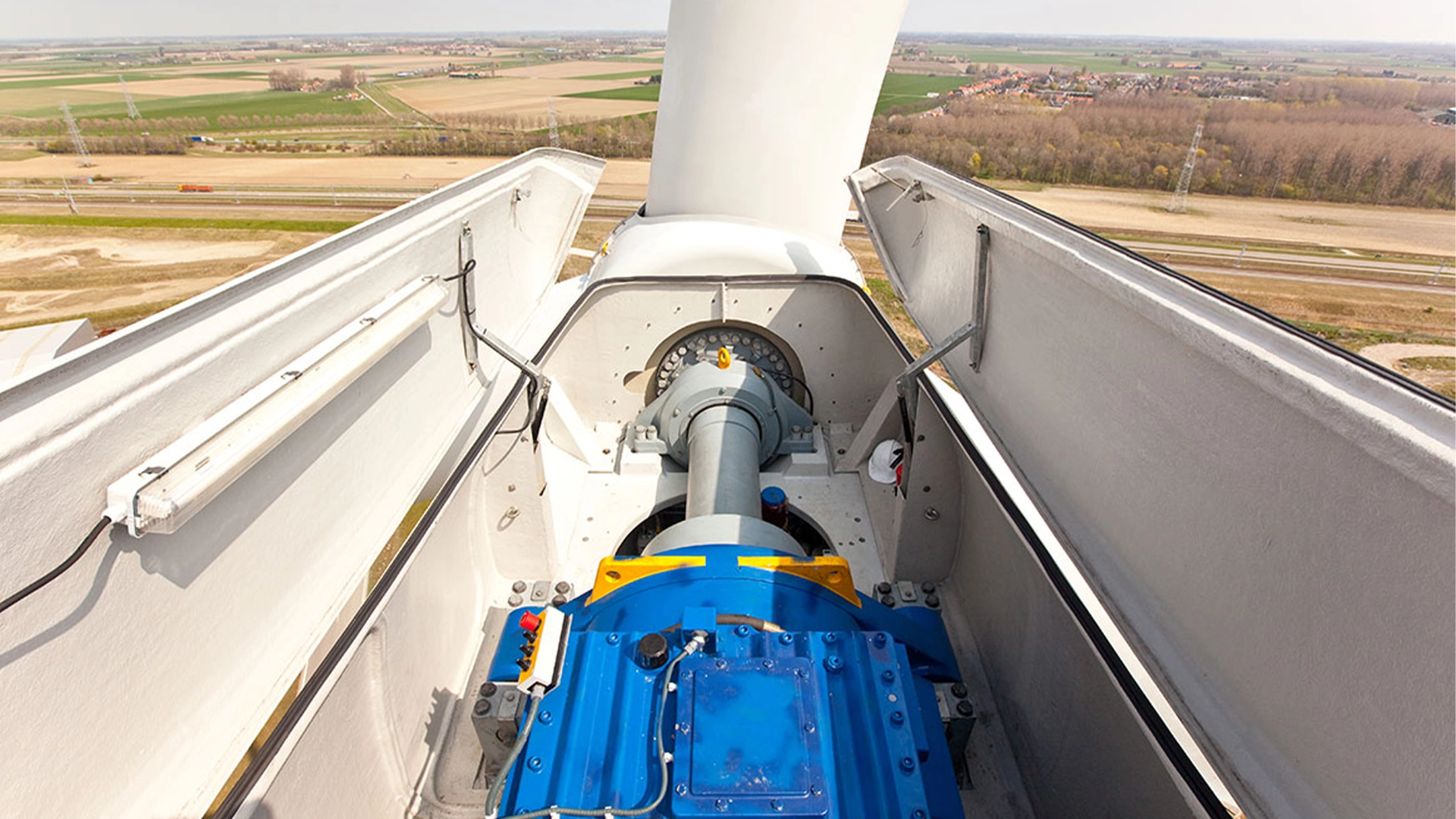Understanding the Key Differences: Component Exchange vs. Routine Servicing
When it comes to the maintenance of wind turbines, understanding the nuances between Main Component Exchange vs. Routine Servicing: Understanding the Difference can be the difference between seamless operations and costly downtime. As a Project Supervisor or a member of an O&M Team, grasping these concepts is essential for optimising your wind energy solutions and ensuring safety on site.
In the wind energy sector, Main Component Exchange involves the complete replacement of key components, such as gearboxes or generators, often necessitated by significant wear or failure. In contrast, Routine Servicing refers to scheduled inspections and minor repairs aimed at prolonging the life of these components. Understanding the difference between these two maintenance strategies is crucial because it directly impacts your operational efficiency, safety protocols, and ultimately, your bottom line.
This blog post will delve into the intricacies of both maintenance methods, exploring their benefits, challenges, and best practices. We will also examine how these approaches relate to the broader theme of Wind Turbine Component Exchange, emphasising their significance for maintaining optimal performance in the field.
At SBL Solutions, we are committed to delivering the highest standards of service in the industry, with a strong focus on safety and quality. Our expertise in both Main Component Exchange and Routine Servicing allows us to tailor solutions that meet your specific needs, enhancing the reliability of your operations.
We invite you to explore these essential maintenance strategies with us and discover how they can benefit your team. For further information or personalised assistance, please do not hesitate to contact SBL Solutions.
What is Main Component Exchange vs. Routine Servicing: Understanding the Difference?
When it comes to maintaining wind turbines, understanding Main Component Exchange vs. Routine Servicing: Understanding the Difference is crucial for ensuring optimal performance and longevity. While both processes are essential for the upkeep of wind energy systems, they serve different purposes. Main Component Exchange involves replacing significant parts of the turbine, such as gearboxes or generators, that have reached the end of their operational life or have experienced critical failure. In contrast, Routine Servicing refers to regular maintenance tasks that keep the system running smoothly, including inspections, lubrication, and minor repairs.

Key characteristics of Main Component Exchange include the necessity for specialised skills and equipment, as these tasks often require taking the turbine offline for an extended period. This is akin to undergoing major surgery, where extensive preparations and expertise are required to ensure a successful outcome. On the other hand, Routine Servicing is more like regular check-ups; it’s about maintaining the health of the turbine through ongoing attention and care, which can be performed while the turbine remains operational, albeit with some limitations.
Understanding these distinctions is essential for project supervisors and operations and maintenance (O&M) teams in the wind industry. By recognising when to implement Main Component Exchange versus Routine Servicing, you can make informed decisions that enhance the reliability, efficiency, and overall Wind Turbine Performance of your wind energy solutions. This knowledge is particularly relevant to SBL Solutions as we strive to deliver high-quality services within the wind turbine component exchange framework, ensuring that our clients receive the best possible outcomes for their investments.
Moreover, misconceptions often arise around these processes. For instance, some may believe that Routine Servicing can completely eliminate the need for Main Component Exchange, which is not the case. Just like a car requires both routine oil changes and occasional engine replacements, wind turbines in the renewable wind energy sector also have their own unique maintenance needs. At SBL Solutions, our commitment to safety and quality training ensures that our team is well-equipped to navigate these distinctions, providing value through every service we offer, including Wind Turbine Component Exchange.
Essential Terms to Understand Main Component Exchange vs. Routine Servicing
To navigate the complexities of Main Component Exchange vs. Routine Servicing: Understanding the Difference, it’s vital to familiarise yourself with key terms that define these processes. Below, we explain important concepts that will enhance your understanding and decision-making in the wind energy sector.
Main Component Exchange
This refers to the process of replacing major components of wind turbines, such as gearboxes or generators, in order to restore or enhance their functionality. It is often undertaken in response to significant wear or failure to ensure optimal performance and safety of the turbine system within the renewable energy sector, especially in offshore or onshore wind farms.
Routine Servicing
Routine servicing involves regular maintenance tasks performed on wind turbines to ensure they operate efficiently and safely over time. This can include inspections, lubrication, and minor repairs, which are critical for prolonging the lifespan of the equipment.
Preventative Maintenance
This type of maintenance is carried out to prevent failures before they occur, often through scheduled inspections and servicing. Understanding preventative maintenance is essential in distinguishing it from more reactive approaches like component exchanges, ensuring that your turbines remain operational without unexpected downtimes.
Downtime
Downtime is the period during which a wind turbine is not operational due to maintenance or repairs. Recognising the implications of downtime is essential for project supervisors and O&M teams, as it directly impacts energy production and operational costs.
Asset Management
Asset management in the context of wind energy involves the strategic planning and execution of maintenance and operational tasks to maximise the lifespan and efficiency of wind assets. Familiarity with asset management principles can help you better understand the implications of component exchanges versus routine servicing.
Safety Culture
Safety culture refers to the shared values and practices within an organisation that prioritise safety in all operations. At SBL Solutions, we emphasise a strong safety culture, which is particularly relevant when considering the risks associated with both main component exchanges and routine servicing.
GWO Accredited Training
Global Wind Organisation (GWO) accredited training ensures that personnel are equipped with the necessary skills and safety knowledge to perform tasks in the wind industry. This training is crucial for understanding safe practices during both routine servicing and more extensive component exchanges.
Understanding these terms not only enhances your grasp of Main Component Exchange vs. Routine Servicing: Understanding the Difference but also empowers you to make informed decisions that prioritise safety and efficiency in wind turbine operations.
Frequently Asked Questions About Main Component Exchange and Routine Servicing
Here, we’ve compiled some common questions regarding the differences between Main Component Exchange and Routine Servicing. These FAQs aim to clarify your understanding and assist you in making informed decisions.
Main Component Exchange involves replacing significant parts of a wind turbine, such as the gearbox or generator, that may be nearing the end of their operational life. This process is crucial for ensuring the turbine’s efficiency and longevity, ultimately minimising downtime and maximising energy production.
Routine Servicing refers to the regular maintenance tasks performed on wind turbines to ensure they operate smoothly. This includes inspections, lubrication, and small repairs, focusing on maintaining the overall health of the turbine rather than replacing major components.
You should consider a Main Component Exchange if your turbine components exhibit signs of wear and tear, or if they are approaching the manufacturer’s recommended lifespan. Regular assessments can help identify these needs, allowing you to plan effectively for replacements.
Routine Servicing helps prolong the life of your wind turbine by identifying potential issues early and preventing costly breakdowns. Regular maintenance ensures that your turbine operates at peak efficiency, ultimately increasing the reliability of your energy output.
Yes, in some cases, Main Component Exchange can be conducted alongside Routine Servicing. This approach can save time and resources, as it allows for comprehensive maintenance and upgrades to be executed in a single operation.
At SBL Solutions, we prioritise safety and quality through our comprehensive training programmes and adherence to industry standards. Our skilled technicians are equipped to handle both Main Component Exchange and Routine Servicing with expertise, ensuring your wind turbines operate efficiently.
During a Main Component Exchange, our team will conduct a thorough assessment of the turbine, remove the old components, and install new ones. You can expect clear communication from us regarding the process, timeline, and any potential impacts on your energy production.
We hope these FAQs have provided you with valuable insights into the differences between Main Component Exchange and Routine Servicing. If you have further questions or need assistance, feel free to reach out to our team at SBL Solutions.
Wrapping Up: Making Informed Decisions for Wind Energy Maintenance
In summary, understanding the differences between Main Component Exchange and Routine Servicing is crucial for optimising the performance and longevity of wind turbines. While both processes play vital roles, they serve distinct purposes. Main Component Exchange focuses on replacing critical parts that may have reached the end of their operational life, ensuring reliability and efficiency. In contrast, Routine Servicing encompasses regular maintenance checks aimed at preventing issues and enhancing overall performance.
Recognising the significance of Main Component Exchange vs. Routine Servicing: Understanding the Difference empowers you to make informed decisions that can lead to improved energy output and reduced downtime for your wind energy assets. By applying the insights from this discussion, you can better manage your operations, ensuring that your turbines are not only functional but also optimally performing in a competitive energy market.
At SBL Solutions, we are committed to providing high-quality services tailored to the needs of the wind energy sector. Our extensive training programmes and a culture centred on safety and continuous improvement equip our team to deliver exceptional results. We encourage you to explore this topic further and consider how these maintenance strategies can enhance your wind energy operations.
If you have any questions or need assistance regarding your wind turbine maintenance strategy, please don’t hesitate to reach out to us. You can contact our expert team for personalised advice and support by visiting our contact page. Together, we can ensure your wind energy solutions are as efficient and sustainable as possible.

